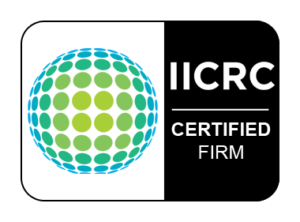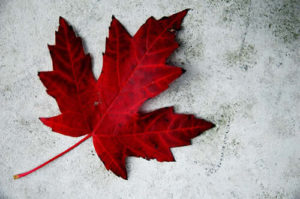Have you found mold in your condo?
Have you found mold in your Condo?
When buying, selling or after purchasing a condo you should be aware of the possibility of the presence of mold. Unfortunately, mold in a condo is a relatively common issue. Caused by the presence of moisture it is visible as water staining on a wall or ceiling, a grey to black patch perhaps in a closet or inside a contaminated HVAC fancoil unit. Mold is a clear health issue that can cause serious health problems, decrease property value, and lead to costly cleanup.
How is the responsibility for the cost to clean this up determined?
So you’ve found mold…and you are concerned. Who will pick up the cost to address the issue and bring your condo back up to healthy standards? The choice is the condo corporation, you or both. But how is this determined?
Responsibility
In condos, responsibilities for mold remediation can fall on both unit owners and condominium corporations, depending on the cause and location of the mold. Mold can often grow unnoticed for long periods and usually becomes noticeable only when visible or when its distinct odor becomes apparent.
Since mold-related disputes between homeowners associations (HOAs), unit owners, and condominium corporations are common, it’s crucial to understand where responsibility typically lies.
Quick Summary
- Mold can negatively affect a condo’s resale value. Buyers are often wary of properties with a history of mold, even if the issue has been resolved.
- Mold exposure can cause significant health problems, especially for individuals with asthma, allergies, or weakened immune systems.
- Mold-related claims account for approximately 10% of all condo insurance claims in Canada, highlighting the significance of the issue.
- From my experience, early detection of mold is crucial in preventing extensive damage and higher remediation costs.
Who Is Responsible For Mold Issues In Condos?
In condos, responsibilities for mold remediation can fall on both unit owners and condominium corporations, depending on the cause and location of the mold. Mold can often grow unnoticed for long periods and usually becomes noticeable only when visible or when its distinct odor becomes apparent.
Since mold-related disputes between homeowners associations (HOAs), unit owners, and condominium corporations are common, it’s crucial to understand where responsibility typically lies.
In most cases we have seen the following;
The responsibility for maintaining inside of your unit, (including cleaning, repairs and clearing up any mold issues that come from within your unit. The responsibility of the Condo Corporation lies within the responsibility of maintaining and repairing common elements like structural components, ventilation systems and shared spaces.
Impact on Condominium Livability and Reputation
Mold’s repercussions extend beyond physical damage to properties. A mold outbreak can drive tenants away, diminishing occupancy rates and, by extension, revenue.
Furthermore, mold can tarnish a building’s reputation, making it less attractive to potential homebuyers and renters and potentially depressing property values.
These challenges require condominium management, unit owners, and occupants to deal with or control mold, preferably before a mold breakout.
Even though building management is accountable for specific areas, like ensuring that the plumbing is at no risk of leaks, drying common areas like the gym or swimming pool change rooms), and controlling moisture where they have control, each residential unit is also responsible for its maintenance.
Frequent showering, cooking, cleaning, and other everyday activities might cause increased moisture and water damage. If residents neglect to eliminate moisture (by employing exhaust fans) or maintain dry spaces, their apartments will be more susceptible to mold growth.
If uncontrolled, mold might spread to the building’s structure and other units. Hence, homeowners must take responsibility for maintaining their units and determining if there are any traces of mold growth.
Keep Your Condo Safe and Mold-Free
Mold in condos is a common but manageable problem. By understanding your responsibilities, performing routine maintenance, and taking prompt action, you can reduce mold risks and keep your living space safe and comfortable. Remember, staying informed and proactive is the key to effective mold prevention and remediation in a condominium setting.




Call 416-254-7256 to talk with us about your issue anytime.
Maple Leaf Mold Inc. is a certified mold / asbestos / lead removal and environmental air analysis company located in Toronto that uses certified IICRC technicians for all testing and remediation projects.
We are a professionally licensed firm experienced in testing, verifying and removing Mold / Asbestos / Lead and other environmental contaminants as well as providing disinfection services to control and kill biological contaminants.
Next Steps After Detecting Mold Problem
Upon the detection of mold in your condominium, it’s imperative to take action swiftly to mitigate the potential health and structural hazards. The process of addressing a mold issue involves several critical steps:
- Reach out to a certified environmental contractor specializing in mold remediation.
- Arrange for a thorough inspection of the affected area to determine the extent of the mold problem.
- Follow the contractor’s recommendations for safely and effectively removing the mold.
- Ensure that all mold-contaminated materials are disposed of according to safety regulations.
- After mold removal, take measures to prevent future mold growth by addressing the source of moisture.
Yet, your mold management strategy must ideally begin with preventative steps, such as maintaining low moisture levels in your condo and keeping sensitive areas dry.
It would be good to insure your condominium with specified coverage for mold damage and mold remediation.
Building managers can make the error of purchasing a comprehensive insurance policy without examining the type of coverage provided. Hence, check and review the insurance you are purchasing.
Effective Mold Prevention and Remediation Strategies
- Regular Maintenance: Keep your unit dry and well-ventilated. Regularly inspect areas prone to moisture, like the bathroom, kitchen, and basement.
- Address Leaks Promptly: Immediately report leaks to building management or hire a plumber if the issue is within your unit.
- Use Exhaust Fans: Run fans during showers or cooking to reduce moisture buildup.
- Check Insurance Coverage: Ensure your insurance includes mold damage and remediation, as this coverage can vary.
Keep Your Condo Safe and Mold-Free
Mold in condos is a common but manageable problem. By understanding your responsibilities, performing routine maintenance, and taking prompt action, you can reduce mold risks and keep your living space safe and comfortable. Remember, staying informed and proactive is the key to effective mold prevention and remediation in a condominium setting.
For more condo articles & listings in Canada, visit Precondo.
